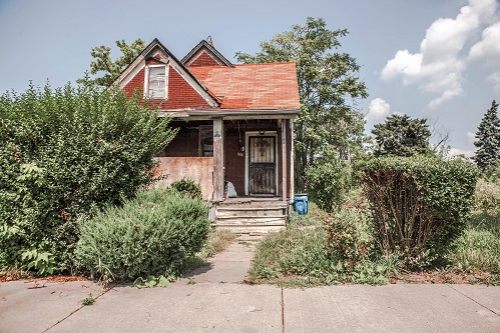- Why is there a home insurance crisis in California?
- How will the recent wildfires affect the California home insurance crisis?
- How is the California government addressing the insurance crisis?
- What areas in California are most affected by the home insurance crisis?
- What to do if you are having difficulty getting homeowners coverage in California
- FAQ: California home insurance crisis
Why is there a home insurance crisis in California?
California has one of the most expensive housing markets in the country, with a typical home value of around $784,000, according to the Zillow Home Value Index. It is also prone to earthquakes and, increasingly, wildfires.
Data from the California Office of the Fire Marshall (Cal FIRE) shows that 15 of the 20 most destructive fires have occurred in the past 10 years. Based on preliminary data, the recent Eaton and Palisades fires in Los Angeles are ranked second and third, respectively.
Max Dugan-Knight, a climate data scientist with Deep Sky Research, said, “Wildfires are now burning in all months of the year. They are also more destructive and more dangerous than they used to be due to climate change.”
With a combination of an expensive housing market and the risk of natural disasters like wildfires, you would expect insurance in the state to be pretty expensive. However, our data show that California's average insurance premiums are just below the national average.
The California Department of Insurance can allow and deny insurance company requests to increase premiums. The goal is to prevent insurance companies from charging policyholders discriminatory and excessive premiums.
Many insurance companies have asked for rate increases. In May of 2025, the California Department of Insurance approved a 17% emergency rate increase for State Farm. The increase will apply to HO-3 homeowners insurance policies and will go into effect June 1, 2025. This is a temporary rate increase while the state conducts a full rate hearing later this year.
So, on one side, the California government is attempting to keep homeowners insurance premiums from becoming excessively high, and on the other, insurers say they need the higher rates to sufficiently cover the risk involved with insuring homes in California.
When State Farm stopped selling new homeowners policies in California, it posted a statement to its website in 2023 where it cited “...historic increases in construction costs outpacing inflation, rapidly growing catastrophe exposure, and a challenging reinsurance market” as its reasons.
Dan Veroff, also an attorney with the Merlin Law Group, says, “State Farm's viability in California is essential because the other insurers operating in the state have made clear that they cannot take on all of State Farm's customers if State Farm further non-renews policies. This would lead to a massive rush to the California FAIR Plan and potentially overwhelm and collapse the market.”
While State Farm may be the largest insurer of homes in the state to start pulling back, they’re not the only one. This puts strain on the remaining insurers and, as Verfoff said, California’s FAIR plan.
How will the recent wildfires affect the California home insurance crisis?
As mentioned above, the most recent figures from the CDI show that $12.1 billion in claims have been paid. This figure doesn't include debris removal or property rebuilding, so it's likely to rise. The CDI also reports that almost 38,000 claims have been filed with close to 28,000 claims receiving at least some payout. Compared to a month earlier that is an increase of $5.2 billion in claim payments and just over 4,000 new claims filed. In January, AccuWeather estimated the total cost of the wildfires, including damage and economic loss, to be between $135 billion and $150 billion.
With State Farm already stating it will require a rate increase and the losses to the California FAIR plan estimated at $6 billion, well above its reinsurance limit of $2.6 billion, the crisis is likely to worsen.
Insurers will need to show financial need for a rate increase; regulators denied State Farm's initial request for this reason, so we don't know yet how much costs will go up. Homeowners in California can expect rate increases, and insurance is likely to be much harder to find in high-risk areas in the future.
How is the California government addressing the insurance crisis?
California is addressing homeowners insurance problems through a combination of guidance from the CDI and legislation.
Some of the steps the CDI has taken include a temporary moratorium on nonrenewals for victims of wildfires. This moratorium also extends to some areas adjacent to neighborhoods affected by the recent wildfires. The CDI commissioner, Ricardo Lara, has also instituted rate review reforms with the stated goal of increasing both the speed of rate reviews and the transparency of the process.
At the beginning of August, the CDI completed its review of the Verisk Wildfire Model to inform how insurance companies set rates in wildfire-prone areas. The new system allows insurers to take wildfire modeling into account when setting rates; in return, the CDI requires that insurance companies offer coverage in high-risk areas.
“We’re proud to be the first catastrophe modeler to work with the California Department of Insurance to offer a modeled assessment of wildfire risk and contribute to efforts to bring stability to the insurance market,” said Rob Newbold, president of Verisk Extreme Event Solutions, in a statement.
The state Assembly recently passed a bill aimed at reforming the California FAIR plan. The FAIR Plan Stabilization Act (AB 226) would provide the FAIR plan with more financial tools, including the ability to issue bonds. It would gain access to a line of credit if it needed additional funds.
What areas in California are most affected by the home insurance crisis?
The CDI recently released a map showing the counties with a high concentration of both FAIR plan policies (higher than 15%) and wildfires (more than 20% of properties in the county considered to be at high risk). The areas meeting these qualifications form an upside-down ‘U’ highlighting the northernmost quarter of the state and reaching down along California’s eastern and western borders. The CDI believes these are areas where traditional insurers have pulled back from insuring homes, requiring the FAIR plan to pick up the slack.
Remember, these are areas that meet both criteria. An area that isn’t highlighted may be at high risk for wildfires but not have a high concentration of FAIR policies or vice versa.
What to do if you are having difficulty getting homeowners coverage in California
If you’re having trouble getting homeowners insurance in California the state has an insurance option of last resort, the California FAIR plan. This association was established in the late 1960s to help homeowners find insurance when they couldn’t find a policy through traditional insurers. It considers itself a “temporary safety net” until homeowners can find a policy through a regular insurance company.
Policies sold through the FAIR plan are extremely limited compared to a more standard homeowners policy. FAIR plans will only cover losses due to a few named perils. In this case, those perils are limited to fire, lightning, internal explosion, and smoke. To obtain coverage, you’ll work with a broker associated with the FAIR plan. The broker will determine whether you are eligible for a FAIR plan.
Michael Ashker, Chairman and CEO of FortressFire, a wildfire assessment and mitigation firm, says that one thing homeowners can do is to perform risk mitigation on their property. “First, homes that are hardened against wildfire vulnerabilities are simply more insurable. If a home is less likely to burn, it’s a better bet for insurers.”
A few steps you can take to harden your home against wildfires include creating a buffer zone around it by removing flammable materials such as dead or dying trees and underbrush. You can also increase the use of less flammable materials on your house, such as slate or tile shingles on your roof and stucco or brick for your home’s exterior facade.
Sources:
- California Department of Insurance. “L.A. County Wildfire Claims Tracker.” Accessed April 2025
- Zillow. “Housing Data.” Accessed April 2025
- CALFire. “Statistics.” Accessed April 2025
- State Farm. “State Farm General Insurance Company: An update on California.” Accessed April 2025.
- State Farm. “State Farm General Insurance Company: California new business.” Accessed April 2025
- Accuweather. “AccuWeather increases estimate of total damage and economic loss ascatastrophic wildfires in Southern California continue to ravage the Los Angeles area; updated preliminary estimate is $135-$150 billion.” Accessed April 2025
- California Department of Insurance. “Sustainable Insurance Strategy.” Accessed April 2025
- California Department of Insurance. “Summary on Residential Insurance Policies and the FAIR Plan.” Accessed April 2025
- Newsweek. “California insurance crisis is killing home sales.” Accessed April 2025
- Consumer Federation of America. “Overburned: The dramatic increase in homeowners insurance premiums and its impact on American homeowners.” April 2025
FAQ: California home insurance crisis
Are insurance companies pulling out of California?
A number of insurance companies have reacted to the California residential insurance crisis by limiting coverage or no longer selling new policies, including State Farm, which insurer stopped selling new homeowners insurance policies in California. The following year, it nonrenewed 30,000 home and 42,000 apartment policies
Allstate paused selling new homeowners insurance policies in November 2022. Other large insurers, including Chubb, Farmers, The Hartford, Travelers, and others, have all reduced their coverage in the state.
How does the home insurance crisis affect home sales in California?
An October 2024 survey from the California Association of Realtors found that 13% of realtors had a sale fall through because the buyer couldn’t find or couldn’t afford homeowners insurance for the property. This is a significant jump from the previous year when only 6.9% of realtors reported the same thing.
Is home insurance expensive in California?
According to our most recent data, at $1,405 the average annual home insurance premium in California is almost $1,200 below the national average of $2,601. This is based on $300,000 in dwelling coverage, $300,000 of liability, and a $1,000 deductible.
A recent report from the Consumer Federation of America (CFA) showed a 25% increase in homeowners insurance premiums between 2021 and 2024. While this is a significant increase, it is less than half of the 59% increase in Arizona during the same period.
But that is an average, and the actual price of insurance will depend on several factors, including your insurance company, the amount of coverage you purchase, and your location.




